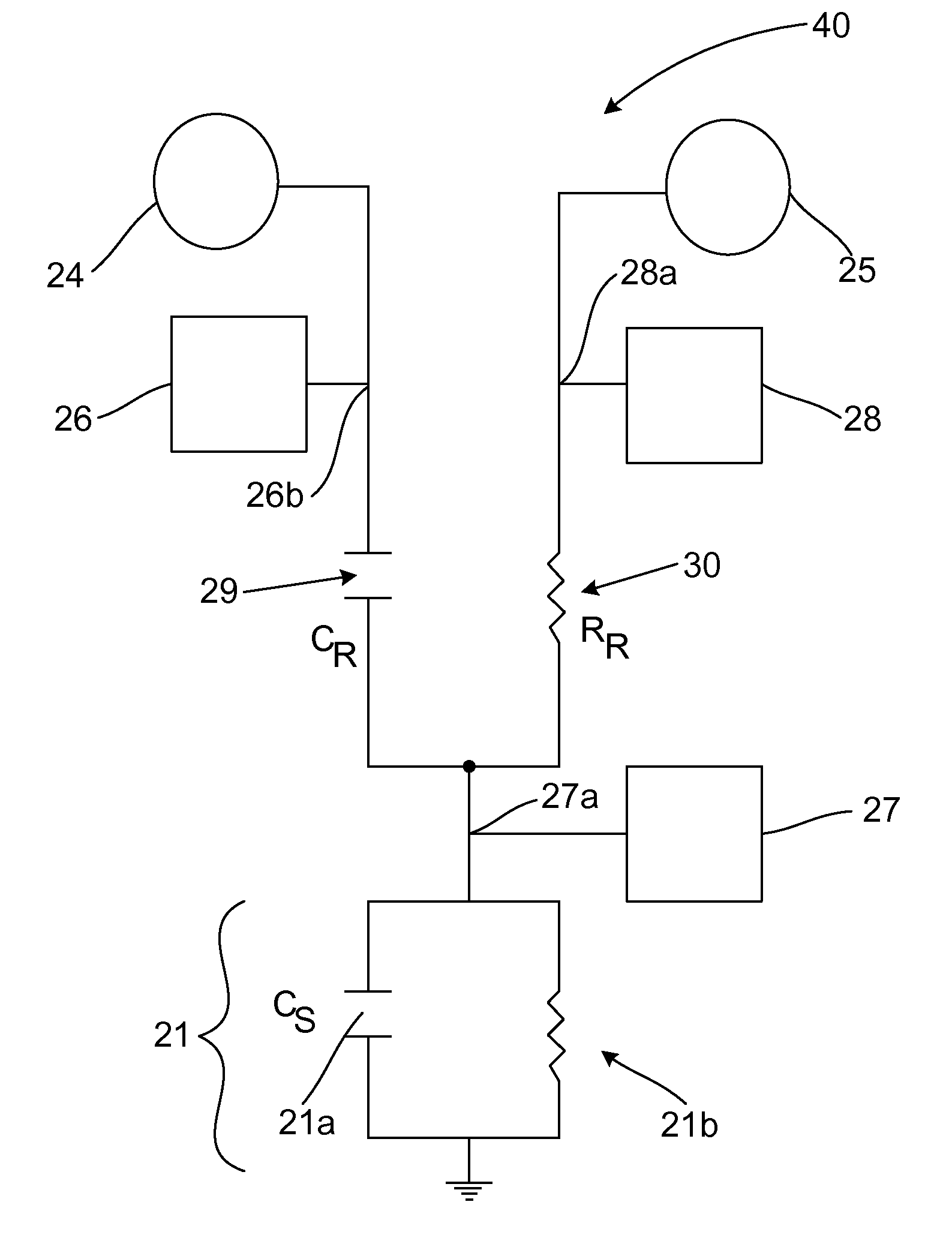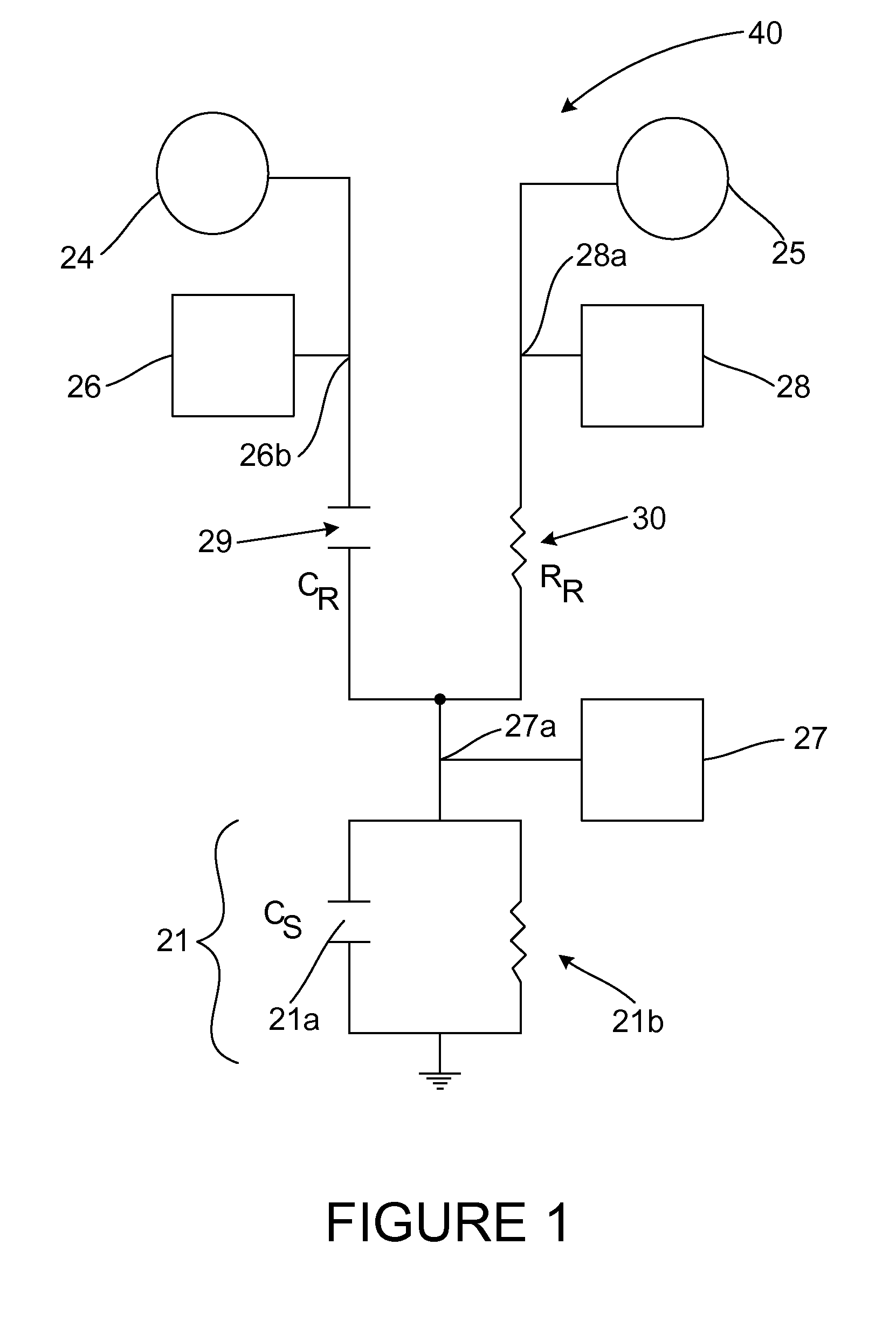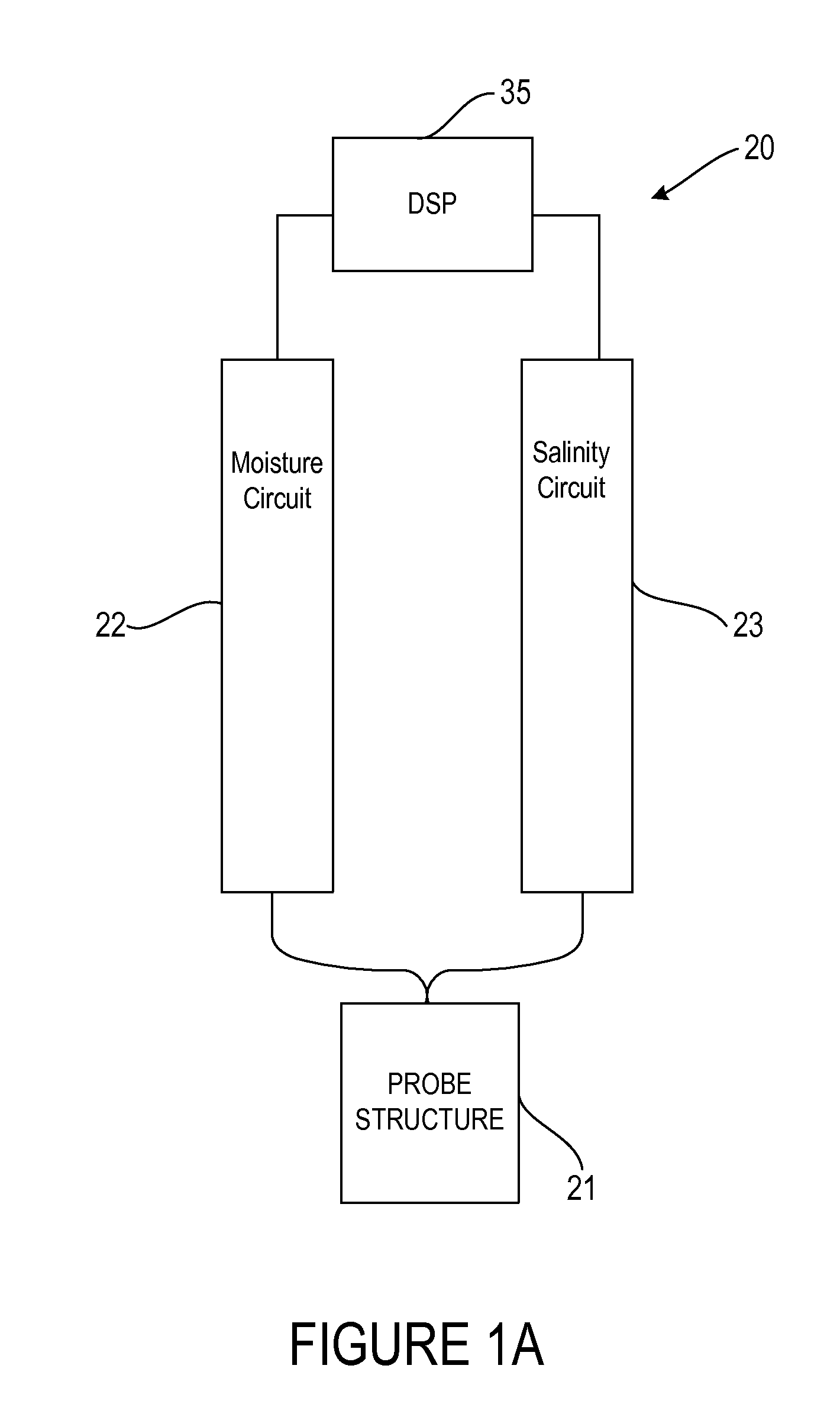Sensor For Measuring Moisture And Salinity
a technology of moisture content and salinity, which is applied in the direction of resistance/reactance/impedence, instruments, measurement devices, etc., can solve the problems of complex calculations, complex calculation, and difficult manufacturing, etc., to improve the detector performance, improve the accuracy of low ac signal levels, and facilitate manufacturing
- Summary
- Abstract
- Description
- Claims
- Application Information
AI Technical Summary
Benefits of technology
Problems solved by technology
Method used
Image
Examples
Embodiment Construction
[0038]FIG. 1 illustrates a circuit diagram of a preferred embodiment of the circuit 40 of the sensor apparatus 20 of the present invention. FIG. 2 illustrates a detailed circuit diagram of a preferred section of the circuit 40. FIG. 1A is a block diagram of the sensor apparatus 20. As shown in FIG. 1A, the sensor apparatus 20 preferable includes a digital signal processor 35 connected to a moisture circuit 22 and a salinity circuit 23, which are both connected to a probe structure 21.
[0039]The probe structure 21 is placed in the soil which is to be measured. The probe structure 21 forms an effective coaxial capacitor within the soil. Such probe structures are well known in the art, and typically include a base and elongated conductors extending from the base and disposed around a central elongated conductor. The digital signal processor 35 or microprocessor, facilitates the process, allowing for multiple conducting structures to be inserted into the soil (or other media of interest)...
PUM
 Login to View More
Login to View More Abstract
Description
Claims
Application Information
 Login to View More
Login to View More - R&D
- Intellectual Property
- Life Sciences
- Materials
- Tech Scout
- Unparalleled Data Quality
- Higher Quality Content
- 60% Fewer Hallucinations
Browse by: Latest US Patents, China's latest patents, Technical Efficacy Thesaurus, Application Domain, Technology Topic, Popular Technical Reports.
© 2025 PatSnap. All rights reserved.Legal|Privacy policy|Modern Slavery Act Transparency Statement|Sitemap|About US| Contact US: help@patsnap.com



